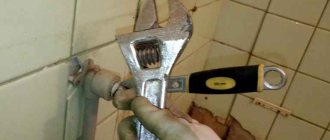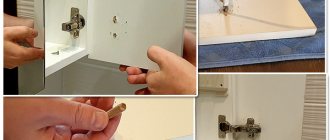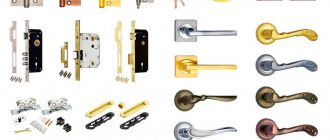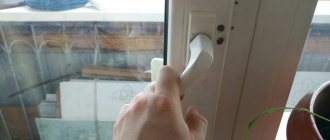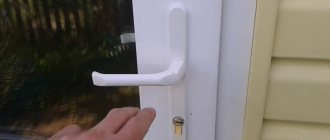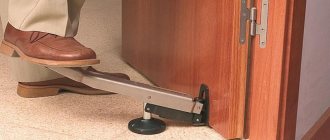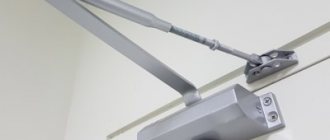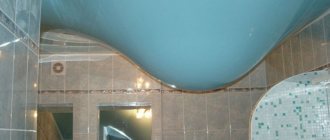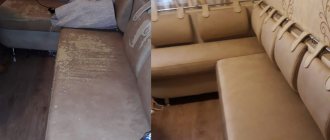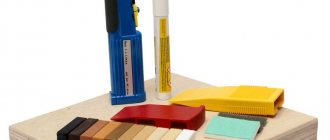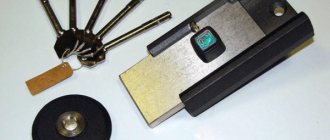As a rule, unscrewing hardware such as a self-tapping screw or screw does not cause problems. You just need to use a suitable tool (screwdriver, screwdriver or drill) and rotate the cap counterclockwise. But sometimes you need to remove a metal fastener whose cap (head) is torn off or whose thread is damaged. In this case, the task becomes more complicated. In this regard, many professionals will advise you to buy more self-tapping screws for insurance.
Previously, we told you about ways to remove a nail with a broken head. But even greater difficulties are caused by unscrewing the hardware if it does not have a head or the edges on the head are torn off. The problem can be solved in different ways.
Method two
If you need to unscrew deep-seated hardware, you simply will not be able to grab it due to the lack of a protruding part. You will have to damage the surface. Of course, you will have to fix the damaged area later, but this is the only option.
If the surface is wood, try using a chisel. If it is concrete, you can either make cuts using a grinder, or lightly process the desired area of the surface with a drill. Then, using pliers or pliers, you can pull out the hardware.
If you have to work with a metal screw, you will have to drill holes around it in order to then remove it with duckbills.
What to do if the first two methods did not work
If the previously described methods do not give the required effect, then additional tools and equipment will be required. In this sense, the engraver and cutting disc were able to prove themselves well. With their help, you can make a small cut on the head, and then the self-tapping screw will be unscrewed using the simplest slotted screwdriver.
For another method, you will need to go to the store to buy a special attachment for a screwdriver, which is called an “extract”. Such a cue ball has special slots, which, when rotated counterclockwise, will bite into the steel of the screw and find even the smallest remnants of slots in the head. They will also cling to them, which will contribute to unscrewing the screw.
This is the bat you should always keep on hand. In fact, there are many ways to unscrew a self-tapping screw or a screw with a broken slot, and most of them the craftsmen don’t even know about, which is why they spoil the surface, trying to pick up the head with side cutters or pliers.
Third way
If there is a head on the fastener and a torn slot (craftsmen use the term licked, rolled), you cannot use either a screwdriver or a drill - they will tear off the hardware. A small piece of rubber or rubberized fabric will help solve this problem. You can, for example, take a regular medical tourniquet or an inner tube from a bicycle wheel and cut a piece out of it in the shape of a rectangle or square. Then place it on the head of the fastener, insert a screwdriver and carefully unscrew the hardware. Thanks to the rubber gasket, which creates additional grip, the tool will not tear off the metal head. If the rubber breaks, cut another similar piece and continue working.
Briefly about the main thing
There are many ways to unscrew a self-tapping screw with a torn thread, worn out splines or a broken head. Some of them allow you to maintain the integrity of the surface and decorative finishing of the material, while others involve their damage or destruction. The choice depends on the final result of the dismantling work, whether you have one or another tool - an extractor, an engraver, a soldering iron, a tubular cutter, etc. But even with a simple screwdriver and glue or a piece of rubber, you can try to do this with minimal damage to the disassembled structure.
Question
Write in the comments what you think - do you know other ways to remove broken fasteners, or are the ones listed quite enough?
Method four
Do you know that you can recut the edges of a torn or damaged fastener head? To put it precisely, to deepen existing but worn-out ones. The easiest way to make one cut is to use a flat-tip screwdriver. You can make such a cut with a Dremel; a grinder or a metal saw will do. But if the self-tapping screw is made of hardened metal, it is difficult to use this option. In addition, part of the fastener should protrude slightly above the surface, only in this case the notch can be deepened.
It is generally accepted that
...a self-tapping screw is the same screw, but only in a modern version. In the old days, almost all fastenings were made using screws. To do this, you had to drill a hole and then screw a screw into it. Unlike screw fastening, self-tapping screws do not require additional preparation that will involve drilling a hole. They can be screwed using a screwdriver or even a regular screwdriver into any suitable surface.
According to external data, the differences between these two fastening elements are small. Screws in the upper part under the head have a smooth part of the shaft that does not have threads, but self-tapping screws have threads on the entire shaft up to the head. Ignorant people may not even immediately pay attention to such features, and will not even find the differences. In construction markets, small self-tapping screws are sold by weight, but large samples are sold individually.
Sixth method
Use an extractor. Although the purpose of this tool is to unscrew bolts, it can also be used when unscrewing fasteners such as self-tapping screws. The peculiarity of the tool is that when it is rotated counterclockwise, the gripping force of the fastener increases, preventing the hardware from being pulled out. Before using the extractor method, you will have to make a hole in the screw in the vertical direction - you will insert the tool into it. If you work with a self-tapping screw made of a hardened alloy, problems will arise - the drill will move to the side. But an ordinary screw can be easily removed in this way by using a thin drill.
If the cap protrudes
The easiest way to remove a screw is if it is not completely screwed in and the head can be grabbed with a hand or power tool. You have two ways:
- hold the head of the hardware with pliers and rotate them counterclockwise;
Source sdelaysam-svoimirukami.ru
- open the chuck of a screwdriver or drill to the size of the head, grab it, clamp it and turn the tool on in reverse rotation.
These methods of how to unscrew a self-tapping screw with torn edges can be used without harm to the surface only if the height of the protruding part of the hardware is sufficient for gripping. In other cases, scratches, chips and other damage cannot be avoided. Therefore, if the work needs to be done “cleanly,” methods for recessed heads are used.
Restoring a notch on a soft cap
With soft screws, the notch on the head breaks off even when screwing in, so dismantling later is problematic. This problem is especially common on door hinges, since the gold-plated screws that come with them are worthless. But they can be unscrewed if you take a good bit from a screwdriver and with a couple of blows of a hammer, like a chisel, squeeze out a new notch in the head.
How to unscrew a bolt without thread?
Try to remove the small bolt with wire cutters. Simply hold the cap between the jaws of the tool and pull it towards you with force. If the thread is completely broken, it will come out without difficulty, and if not completely, turn the pliers together with the bolt counterclockwise.
Interesting materials:
Can you keep your bike in the rain? Is it possible to eat spoiled fish? Is it possible to eat from cracked dishes? Can you eat coconut raw? Is it possible to eat boletus with film? Is it possible to eat before cardio training? Is it possible to drive on winter tires in spring? Can artificial leather be ironed? Can two people play Skyrim? Is it possible to use 3D panels in the bathroom?
Placing rubber
If the head remains on the screw, but the slot is torn off, you can use a rubber gasket. To do this, a small square of rubber is placed on the surface of the fastener, which will act as a layer between the screw and the tool, preventing the latter from spinning.
Almost any dense rubber is suitable for this method, for example, a medical tourniquet or a bicycle inner tube. It is important that the rubber gasket is strong so as not to tear, but at the same time thin enough so as not to lose grip. If the rubber breaks or is otherwise damaged during operation, simply take a new piece.
Edge notch
In the case of a broken screw head or worn edges, you can create a notch on the head for better support for a flat-head screwdriver. The notch is applied using a Dremel, grinder or other tool that cuts through the alloy. But with this method, the surface of the material will be damaged if the screw sits deep.
Necessary advice: If the material allows, you can use the property of the alloy to expand when heated and contract when cooled. Stuck fasteners are heated using a lighter, soldering iron or hair dryer. The screw will grow slightly, pushing the material apart, and when it cools down, it will return to its previous state. As a result, a microscopic gap may appear between the rod and the material, which will slightly loosen the fastening and make it easier to unscrew.
How to remove a self-tapping screw stuck in wood
Hello, now something has come out that you wouldn’t expect in a traditional hand carpentry workshop. And yet the least. The epic with the restoration of the Viennese chair lasts and in the process of working on one of the parts, it was seen treacherously sticking out, not even a screw, but a self-tapping screw, a torn screw, without a head.
- Slightly already loosened torn screw in a Viennese chair
- Viennese chairs / Thonet chairs
Apparently the previous repair attempt was not very successful... Well, not a failure.
I was frankly not prepared for this turn of events, but information about a screw extruder from miki-tool (a set for extracting screws) came to mind. Accordingly, a trip to the store was made and a study of the annotation was carried out. Yes, I'm probably the only person who does this. What can I say about the costs of the profession?
With this kit, the broken screw can be easily removed from the hole. The set is designed for removing broken screws Ø from 3.2 to 4.8 mm from wood. The set consists of a three-jaw chuck with a hexagonal end, an extractor for 2-3.8 mm (2 pcs.), an extractor for 0-4.8 mm (2 pcs.), a sleeve and a rod for removing the screw from the extractor. Creation of Star-M (Japan)
- Screw extraction kit (screw extruder)
- screw grip
- We drive the grip into the part, grasping the self-tapping screw or self-tapping screw
And so, first of all, we select a grip along the diameter of the torn screw and drive it in with a hammer to a certain depth. The grip has sharpened edges, and overall it grips normally. The set includes two screw extractors of 2 sizes.
Next, we take the cartridge and install it in a screwdriver or a brace, depending on your taste. Since this is a puller, it is worth paying attention to the fact that it works backwards, i.e. the lips tighten when the screwdriver is used counterclockwise.
- Application of puller chuck
- Slightly already loosened torn screw in a Viennese chair
It didn’t work out the first time, I had to repeat the operation a couple of times, and later completely change the size of the traction tube.
And lo and behold, it immediately started working, the self-tapping screw was pulled out and appeared from the outside.
- Extended broken self-tapping screw
- Extended broken self-tapping screw
After this, you need to remove the remaining screws from the clamping tube. Here, in my joy, I forgot about the annotation and knocked it out using the means at hand. Luckily everything is included.
- Broken self-tapping screw, bushing and pin for knocking it out
- We clamp the bushing and knock out the screw
- ready
But it turned out that the clever Japs have everything included =)) We insert the bushing into the template, the pin into the bushing, hit it with a hammer and voila.
- template for knocking out a screw
- Knockout pin template
- A screw fragment knocked out of the grip
So now the epic with the broken screw is over, all that remains is to create a seal and the job is done.
The extraction kit can be found here:
With this kit, the broken screw can be easily removed from the hole. The set is designed for removing broken screws Ø from 3.2 to 4.8 mm from wood. The set consists of a three-jaw chuck with a hexagonal end, an extractor for 2-3.8 mm (2 pcs.), an extractor for 0-4.8 mm (2 pcs.), a sleeve and a rod for removing the screw from the extractor. Creation of Star-M (Japan)
Catalog > Building materials and products for construction. Construction work > Doors
Probably, at least once in your life, while disassembling a prefabricated structure, you have encountered the following problem - you need to unscrew a damaged screw with a slot or Phillips.
Screws can be screwed into wood thanks to threading. Ease of installation will be ensured by sharp turns that will not harm the inner layers of wood, will not reduce their hardness and will not allow the layers to move (which happens when fastening with nails). The shaft of the screw gradually tapers and ends with a sharp tip that penetrates the wood. When working with hard wood or in the case of a large diameter screw, a hole is made in advance with a drill of a smaller diameter.
The traditional requirement for fasteners for wood is the strength of installation. But over time, due to the operation and repair of structures, they have to be disassembled. Example: skewed door hinges that need to be corrected. They are secured with screws, and if one of them is “tightly” stuck, serious problems arise. Common situation?
One damaged screw can complicate repairs.
Instead of a cross-shaped recess, only a hole remained. How to unscrew such a screw?
There can be many reasons: a defective screw, a hole damaged from frequent screwing in fasteners, a damaged slot.
There is an obvious defect in the screw slot.
The slot on this screw is broken.
During the installation of fasteners, the screw simply breaks at the point of screwing in, when it is screwed in especially tightly, if you want to increase the strength of the installation. In such fastenings, the entire load falls on the screws. Because of this, their grooves “settle”, getting stuck in the wood, which subsequently leads to the fact that unscrewing the screws becomes a serious problem. In addition, to increase strength, the holes for the screws are filled with glue, sealants, mastics, oil varnishes, alabaster, and molten nylon. All this makes it very difficult to unscrew them; the fastener in the tree “let in the roots.” For example, in the manufacture of wooden boats, temporary fixation of glued boards is used. The boards are attached with screws, which are removed when the glue hardens. But the glue “grabs” the slot of the screw, making attempts to unscrew it a real Herculean task. Both the hole and the slot are damaged. Then, when removing the slot, the fastening materials are damaged. Even if adhesives are not used, corrosion can also do its dirty work: by rusting, the metal fastener becomes one with the wood.
What to do if the unfortunate piece of iron is stuck tightly, if its slot is so damaged that it cannot be unscrewed with a screwdriver? Do you know anything about a special attachment designed for unscrewing damaged screws? But thanks to it, removing a damaged and damaged screw is an easy task.
A set of nozzles used to remove fasteners.
The advantage of such “retractors,” also called extractors, is that their use does not damage materials and parts fastened with screws. The extractor is made of high strength hardened steel with chromium and vanadium. It is designed to remove damaged screws and screws. The extractor shape is constructed from a steel rod, the front working end of which (cone or cut cone shape) has a left cut. The other end of the tool has two or 4 edges that help fix it in the electric drill holder.
- steel rod:
- front part with left screw thread
- edged end
Threading is necessary so that the extractor rotates counterclockwise and unscrews the screw with the right-hand thread from the inside. Before this, the screw is drilled with a thin drill. A hole is formed inside the screw into which the end of the extractor enters, which, with the help of its turns, is fixed inside the damaged screw. The process is shown schematically in the figure:
- Working with a drill
- Extractor extraction
If you want to remove a damaged screw, you will need the following tools:
- electric drill (with variable movement, counterclockwise and clockwise), but a hand drill will also work,
- thin drill,
- extractor,
- center punch
- hammer
- vice
If the screw slot is broken and only the core remains from the wood, then you need to use a center punch to make a cone-shaped recess so that the drill does not come off later. Hit the punch with a hammer, but not too hard, because the diameter of the rod is already small, do not damage it even more. The point of the punch should be directly in the center of the rod.
If the screw slot is broken, use a punch to prepare a recess.
If the screw head is in place, but its slot is damaged, you can start drilling right away. The drill bit must match the diameter of the screw. The recommended drill size is 1/16. Do not forget that the screws taper towards the end, so it is enough to drill a small hole in the middle of the screw (approximately a third of the length). Make sure that you do not deviate from the drilling path, that the gimlet in the middle of the screw goes deep along the central axis, that it drills evenly through the middle.
Drill the screw shaft from the inside.
After pulling the drill bit out of the screw, insert the extractor into the drill holder instead and set the drill movement counterclockwise. The size of the extractor must match the size of the screw.
After drilling, set the drill movement counterclockwise
Insert the extractor into the drilled hole.
After inserting the screw end of the extractor into the screw hole, first turn it slowly, counterclockwise. Let it enter the screw and create a thread in the hole with its turns. Make sure it is well secured and secure the turns (to the same left side). Soon the screw will easily come out.
At the beginning, slow turns to the left. Screwing in
Increasing the speed, unscrew the screw.
The extractor should rotate counterclockwise.
If you want to release the extractor itself from the screw, clamp this fastener in a vice and turn the extractor to the right. The screw will remain in the vice and the tool will remain in the drill.
Using the extractor
If heat treatment does not help cope with the problem, you need to use other approaches. Let's look at how to remove a broken screw from wood using an extractor. This device is installed on an electric drill and can have different diameter sizes.
Therefore, in order to easily drill out hardware, you need to choose the right size of the nozzle for the tool. Before removal, a small recess is made in the cap, a drill of a suitable size is installed and the fastening element is carefully unscrewed.
Drill completely
When all of the above methods have failed, there is a radical way to remove stuck fasteners. The screw or screw is completely drilled out to the base. Then a new fastener with a larger diameter is inserted into the hole.
Practical advice: When removing a stuck fastener, you must follow safety precautions. During the drilling process, iron shavings are generated, scattered around, and getting into the eyes can cause injury. At the end of the work, remove the shavings with a brush or sponge so as not to destroy the skin on your hands.
Did you like the article? Then support us, press
:
Gluing the tool and the screw
If you don’t have rubber at hand, but have a fairly “powerful” glue, then you can use it. To do this, a small amount of glue is dripped onto the surface of the screw. When it begins to dry, place the screwdriver or drill in its original position, press firmly and wait until the glue has completely set. After this, the screw is unscrewed in the usual way.
The note. When using this method, you need to work with the tool very slowly and carefully. Otherwise, there is a high probability that the tool will come off and you will have to start all over again.
Drilling fasteners together with wood
You can simply drill a hole around the screw with a tubular cutter or core drill.
Since such attachments are drilled only along the rim, the screw itself will remain intact. Having gone deep enough, you can simply break out the screw along with the surrounding wood. There will be a large hole in the center that needs to be filled with an insert of a suitable diameter; if the surface is then painted, the defect will be invisible.
When drilling with a factory-made or homemade cutter made from a steel tube, it is difficult to hold a drill that breaks away, so it is better to use a drilling machine.
If you need to work with a drill or screwdriver, then to position the cutter you can use a homemade stop made of a piece of wood. It is enough to drill a through hole in it and apply the template to the screw head, and it will not allow the cutter to move to the side.
These methods will allow you to remove fasteners even from hard wood, regardless of the degree of damage. Of course, you have to tinker, so if you have to screw bad screws into hard wood, then it is better to lubricate the surface of the thread with wax or soap. Such fasteners are easier to tighten, so the situation with the head breaking off or the notch breaking off will happen less often. Unfortunately, if the screw has been in the wood for a long time and needs to be unscrewed, then wax and soap will no longer help, so you will have to use one of the proposed methods.
Increased torque
If the head of the hardware and the splines on it are not damaged, and the methods used did not produce results, you can try to increase the torque. This can be easily done in two ways:
- Place a screwdriver or tool bit into the recess, clamp with pliers and turn.
- A small flat-type screwdriver is installed in the slot as close to the edge of the head as possible. The handle of the screwdriver is hit hard with a hammer, trying to move the fastener from its place. If this happens, it is unscrewed in the usual way.
With this method, you need to be precise and careful not to damage the cap, otherwise you will have to use an extractor. It is not recommended for use on furniture and wood trim; if you make a mistake, you can hit the surface and damage it.
Option seven
Use welding. In other words, weld a nut, some kind of rod or lever to a fragment of a screw or screw, which will allow you to remove the fastener without effort. Some use the cold welding method, others consider it unreliable and weld the alloy.
In this case, if the self-tapping screw or screw is in the wood surface, they can be heated, all with the same soldering iron. The alloy will expand, then contract again, the wood around it will be slightly burned and the fasteners will come out much easier.
